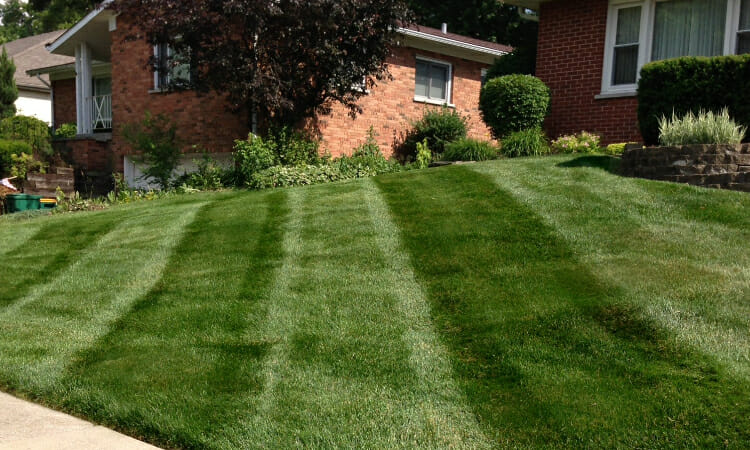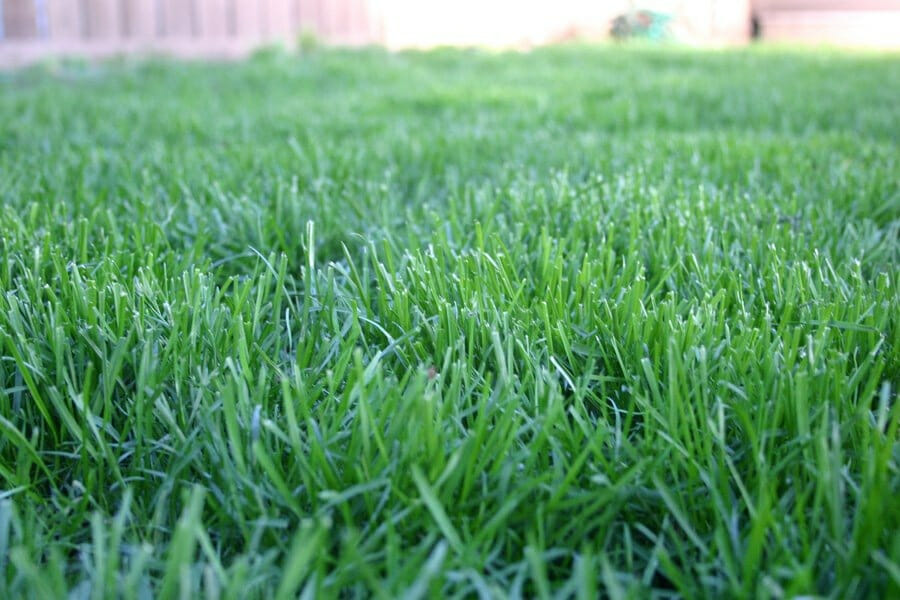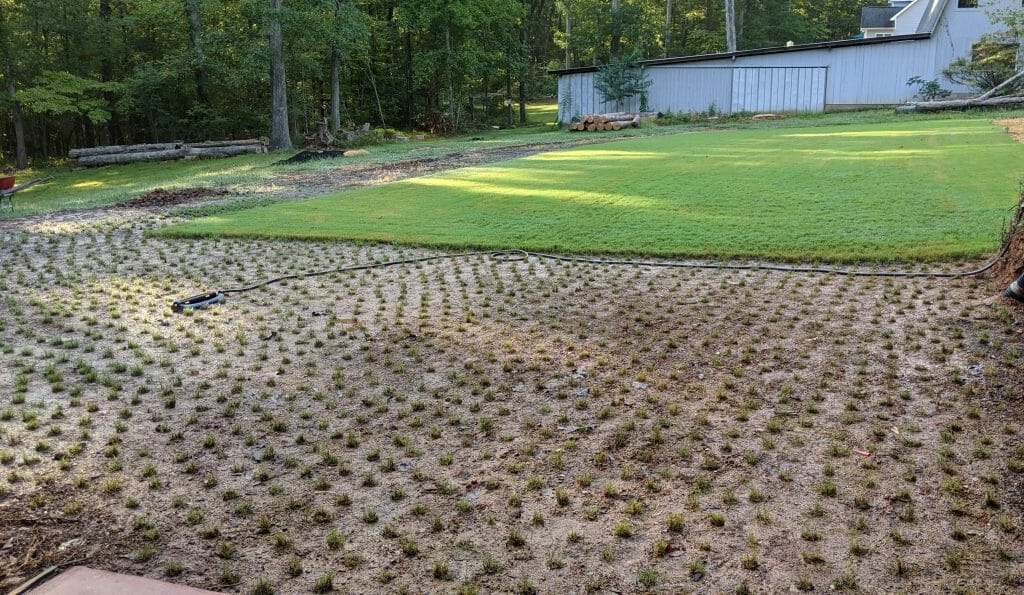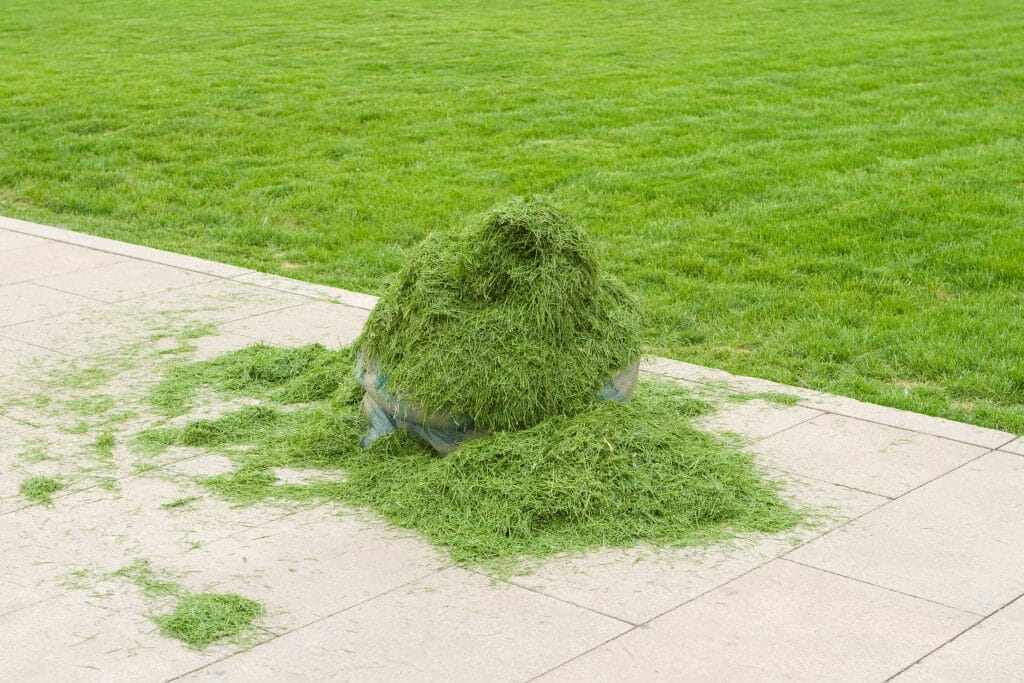
Once properly established, Kentucky bluegrass spreads relatively quickly because of its rhizomes. However, germination and growing into a full lush lawn takes a little longer, approximately 2 – 5 weeks.
Kentucky bluegrass is one of the most popular grass types in the US, especially in the cooler northern states. Compared to other cool weather grass it takes more time to establish but once it does it is quite resilient.
Learn more about this Kentucky bluegrass and how it grows in your lawn here.
What Type of Grass is Kentucky Bluegrass?
Kentucky bluegrass is one of the best spreading grass types. It is a perennial cool-season lawn grass meaning it grows best in colder climates and regrows each year.
The reason why this grass type does best in cooler climates is because it is more sensitive to drought. Its shallow roots means it cannot access moisture in the soil very well and so dries up easily.
At the same time, this Kentucky bluegrass is notoriously unsuitable for highly shaded areas. It likes plenty of sun, albeit without it reaching too high temperatures.
DON’T MISS: What’s the temperature when grass stops growing?
How to Best Grow Kentucky Bluegrass

Kentucky bluegrass grows best in fall weather which is also the time you should first plant the seeds. Ideally, the soil temperature is between 50 – 65 degrees Fahrenheit.
Since germination takes longer compared to other perennial cool-season grasses, you might want to start with sods. This speeds up the establishment of Kentucky bluegrass.
As mentioned, Kentucky bluegrass does not do very well in shady weather so it is a good idea to mix the seeds with another more shade-resistant variety. Examples include rough bluegrass and perennial ryegrass.
This species needs at least 1 inch of water per week, from either the sprinkler or rainfall. In the warmer states, you should increase this to a 2 inch level to make up for the warmer temperatures.
Once it has established, keep the grass mown at a height of at least 2 inches. Going below this damages the seedlings so make sure the lawn mower is set to an appropriate height.
Also, this species easily builds up thatch which can smother the younger blades. It is better to bag your clippings to prevent too much thatch buildup.
This type of lawn should be fertilized 3 – 4 times per year with 3 – 5 lbs of nitrogen per 1000 square feet. The exact amount will depend on how fertile the soil is and how easily weeds grow in the area.
- Spreads fast after establishment
- Quick recovery
- Resistant to colder temperatures
- Soft lush blades
- Beautiful color
- Longer germination time
- Does not do well in shade
- Sensitive to drought
Frequently Asked Questions:
How Fast Does Kentucky Bluegrass Grow?
Kentucky bluegrass needs 2 – 5 weeks to fully establish. Once it has properly spread throughout the lawn, you should keep it at a height of 2 inches.
What Temperature Does Kentucky Bluegrass Grow Best?
Kentucky bluegrass grows fastest when the soil temperature is 50 – 65 degrees Fahrenheit. This is approximately the soil temperature of the northern US states during fall season.
Will Kentucky Bluegrass Choke Out Weeds?
If the lawn is well maintained, Kentucky bluegrass will be able to choke out most weeds. However, this is not true for a newly planted Kentucky bluegrass lawn.
Make sure that your lawn is properly treated for weeds before planting this grass species. Also, if there is any big damage, try to fill in the patches before the weeds get a chance to spread.
Conclusion
Kentucky bluegrass is a fast spreading perennial cool weather grass. Although its germination takes considerably longer at 2 – 5 weeks, once established it will choke out most weeds.
This grass type grows best in the fall in the cooler northern states of the US. It does need more water though, because its roots are shallower.
If you would like to grow Kentucky bluegrass, make sure you start planting in the fall and provide at least 1 inch of water weekly. Combine the seeds with a variety that is better adapted to shady areas to make up for its biggest disadvantage.


